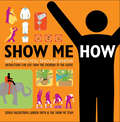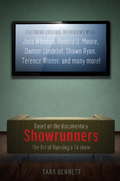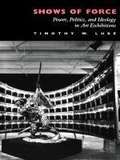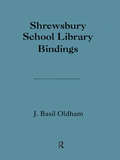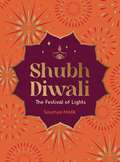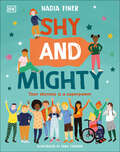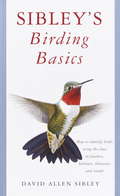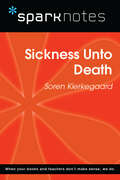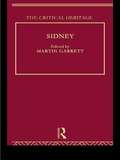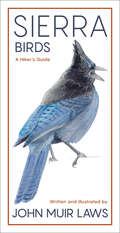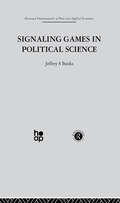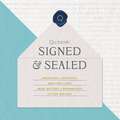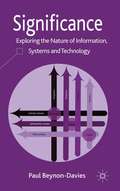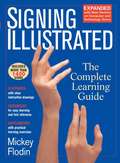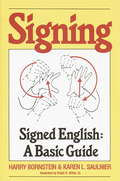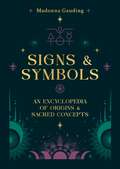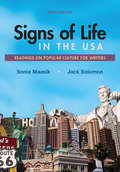- Table View
- List View
Show Me How: 500 Things You Should Know Instructions for Life From the Everyday to the Exotic
by Lauren Smith Derek FagerstromShow Me How is a revolutionary reimagining of the reference genre, one part how-to guide, one part graphic art showpiece, and one part pure inspiration. In a series of 500 nearly wordless, highly informative step-by-step procedurals, readers learn how to do hundreds of useful (and fascinating and important and sometimes downright bizarre) tasks, including: Perform CPR, dance the tango, pack a suitcase, win a bar bet, play the blues, make authentic sushi rolls, fight a shark . . . and 493 more essentials of modern life. Packed with useful hands-on reference material, Show Me How is a work of art that just happens to also be an indispensable real-life resource. Visit showmenow
Showing & Telling: Learn How to Show & When to Tell for Powerful & Balanced Writing
by Laurie AlbertsWrite vibrant scenes and essential summaries "Show#151;don't tell. " How many times have you heard this standard bit of writing advice? It's so common in writing courses and critiques that it has become a cliche. Writers are often told to write scenes, dramatize, cut exposition, cut summary#151;but it's misguided advice. The truth is good writing almost always requires both showing and telling. The trick is finding the right balance of scene and summary#151;the two basic components of creative prose. Showing and Tellingshows you how to employ each of these essential techniques in the appropriate places within a narrative. You'll learn how to: Write scenes and cut exposition Compress time and summarize background information Create graceful transitions Effectively inject interpretation And more! Complete with examples from bestsellers and interactive exercises, this comprehensive guide offers an in-depth look at scene development, the role of reflection in storytelling, the art of summarizing, and how to bring it all together.
Showrunners: The Art of Running a TV Show
by Tara BennettCollected from a truly expansive exploration of television's most creative minds, Showrunners is an insider's guide to creating and maintaining a hit show in today's golden age of television. The official companion to the documentary Showrunners, this highly informative book features exclusive interviews with such acclaimed and popular showrunners as Joss Whedon, Damon Lindelof, Ronald D.Moore, Terence Winter, Bill Prady, Shawn Ryan, David Shore, and Jane Espenson.
Shows of Force: Power, Politics, and Ideology in Art Exhibitions
by Timothy W. LukeIt has long been considered a mark of naïveté to ask of a work of art: What does it say? But as Timothy W. Luke demonstrates in Shows of Force, artwork is capable of saying plenty, and much of the message resides in the way it is exhibited. By critically examining the exhibition of art in contemporary American museums, Luke identifies how art showings are elaborate works of theater that reveal underlying political, social, and economic agendas.The first section, "Envisioning a Past, Imagining the West," looks at art exhibitions devoted to artworks about or from the American West. Luke shows how these exhibitions--displaying nineteenth- and early-twentieth century works by artists such as George Caleb Bingham, Frederic Remington, Frederic Edwin Church, and Georgia O'Keefe--express contemporary political agendas in the way the portray "the past" and shape new visions of "the West."In "Developing the Present, Defining a World," Luke considers artists from the post-1945 era, including Ilya Kabokov, Hans Haacke, Sue Coe, Roger Brown, and Robert Longo. Recent art exhibits, his analysis reveals, attempt to develop politically charged conceptions of the present, which in turn struggle to define the changing contemporary world and art's various roles within it.Luke brings to light the contradictions encoded in the exhibition of art and, in doing so, illuminates the political realities and cultural ideologies of the present. Shows of Force offers a timely and surely controversial contribution to current discussions of the politics of exhibiting art.
Shrewsbury School Library
by James B. OldhamFirst Published in 1990. Shrewsbury School dates back to the end o f the sixteenth century, and owes its existence to the provision contained in the Ordinances of 1578. This is a listing and descriptions of the books, bindings and comtents of the library.
Shubh Diwali: Modern Reflections on the Timeless Wisdom and Traditions of Diwali
by Summersdale PublishersFilled with quotes, sayings and teachings from the Ramayana, this book will inspire and uplift you during the week-long celebration of DiwaliThis book celebrates the triumph of light over darkness, good over evil, and knowledge over ignorance with timeless teachings from the Ramayana. Brimming with powerful quotes, sayings and reflections, it captures the essence of Diwali and how its epic lessons relate to our daily lives.Immerse yourself in this beautiful selection of powerful words to help you feel inspired and illuminate the spiritual week of Diwali with the wisdom of Lord Rama, Sita and Lakshmana. May their journeys of honesty, loyalty and devotion be your source of strength throughout this festival and bring you and your family a bountiful season.Shubh Diwali will bring you peace in your holy week of Diwali and in your life. Let it be a reminder to keep the flame of goodness burning.Shubh Diwali!
Shy and Mighty: Your Shyness is a Superpower
by Nadia FinerOur noisy world sometimes feels like it&’s not made for shy people. This book will help children better understand their shyness and find their inner voice.Shyness is often misunderstood. It&’s not a disability or personality flaw; it&’s a complex trait with many positive aspects. However, shyness can lead kids to struggle to speak up in class, get involved in activities, make friends, put themselves forward, and compete. As a result they can miss out on fun and exciting opportunities, and are often overlooked, ignored, and sidelined... but it doesn't have to be this way. Shy And Mighty Kids offers a new way of looking at the subject that will help children overcome the aspects of their shyness that are holding them back, without scaring themselves or pretending to be something they are not. Packed with simple tools, techniques, and ideas to help you take small steps to get more involved, share your ideas, and make friends, Shy and Mighty Kids also explores the science behind shyness, the potential cost of shyness, and more. Combining personal experience with extensive research and feedback from parents and kids, Shy and Mighty Kids will help kids go from invisible, to invincible!
Sibley's Birding Basics
by David Allen Sibley"I wrote and illustrated this book to help every inquisitive birder, from novice to expert. Whether you can identify six birds or six hundred, you'll be a better birder if you have a grounding in the real nuts and bolts of what birds look like, and your skills will be even sharper if you know exactly what to look for and how to record what you see." --David Allen Sibley The Sibley Guide to Birds and The Sibley Guide to Bird Life and Behavior are both universally acclaimed as the new standard source of species information. And now David Sibley, America's premier birder and best-known bird artist, takes a new direction; in Sibley's Birding Basics he is concerned not so much with species as with the general characteristics that influence the appearance of all birds and thus give us the clues to their identity.To create this guide, David Sibley thought through all the skills that enable him to identify a bird in the few instants it is visible to him. Now he shares that information, integrating an explanation of the identification process with many painted and drawn images of details (such as a feather) or concepts. Birding Basics begins by reviewing how one can get started as a birder: the equipment necessary, where and when to go birding, and perhaps most important, the essential things to look for when birds appear in the field. Using many illustrations, David Sibley reviews all the basic concepts of bird identification and then describes the variations (of shape, size, and color) that can change the appearance of a bird over time or in different settings. And he issues a warning about "illusions and other pitfalls"--and advice on avoiding them. The second part of the book, also plentifully illustrated, deals with another set of clues, the major aspects of avian life that differ from species to species: feathers (color, arrangement, shape, molt), behavior and habitat, and sounds.This scientifically precise, beautifully illustrated volume distills the essence of David Sibley's own experience and skills, providing a solid introduction to "naming" the birds. With Sibley as your guide, when you learn how to interpret what the feathers, the anatomical structure, the sounds of a bird tell you--when you know the clues that show you why there's no such thing as "just a duck"--birding will be more fun, and more meaningful. An essential addition to the Sibley shelf!From the Trade Paperback edition.
Sickness Unto Death (SparkNotes Philosophy Guide)
by SparkNotesSickness Unto Death (SparkNotes Philosophy Guide) Making the reading experience fun! SparkNotes Philosophy Guides are one-stop guides to the great works of philosophy–masterpieces that stand at the foundations of Western thought. Inside each Philosophy Guide you&’ll find insightful overviews of great philosophical works of the Western world.
Sidney Poitier: The Great Speeches of an Icon Who Moved Us Forward
by Sidney Poitier Joanna PoitierThe speeches of film legend Sidney Poitier—given at commencement addresses, awards shows, memorials, and more, on topics ranging from entertainment history to filmmaking, civil rights, and parenthood—come to vibrant life in this inspirational and stunningly packaged volume from the Poitier estate that sheds new light on the trailblazing artist's life and culture of the past century. Sidney Poitier represented strength, good looks, and above all dignity at a time when Black representation on the screen was so often relegated to servile parts. He broke ground as the top box-office draw in Hollywood at the peak of his career, and was the first Black actor to win the Best Actor Oscar, for his performance in Lillies of the Field (1963). Poitier—who narrowly escaped illiteracy after rising up from an impoverished childhood and the massive obstacles he faced as a Black man in mid-twentieth century America—was also one of the most articulate and sought-after speakers of his day. This book is a one-of-a-kind collection showcasing the wise, witty, and deeply personal speeches Poitier gave at awards ceremonies, family events, memorials, and more. His salutes to artists such as Dorothy Dandridge, Spencer Tracy, Stanley Kramer, and Denzel Washington offer fresh insight on icons of our time. Poitier's unforgettable cadence and voice are clear as day on the page, sometimes with careful edits and additions written in his own hand. Compiled by his wife, Joanna Poitier, and illustrated by dozens of professional and family photos, this collection stunningly captures all that was remarkable about the man through his own words; archives moments in the history of entertainment, culture, and civil rights; and offers a uniquely inspirational perspective on career, family, art, and life.
Sidney: The Critical Heritage (Critical Heritage Ser.)
by Martin GarrettFirst published in 1996. Routledge is an imprint of Taylor & Francis, an informa company.
Sierra Birds: A Hiker's Guide
by John LawsOver 35,000 copies sold! As a naturalist managing the field studies program at the California Academy of Sciences, John Muir Laws noticed that novice birders often distinguish birds by color and size rather than species. This inspired him to create Sierra Birds: A Hiker's Guide, a unique book that assumes no prior birding knowledge on the part of the reader. Color-coded keys eliminate the time-consuming frustration of thumbing randomly through a guide, and a cross-index is also included for more advanced birders. All this in a format that is simply organized, lightweight, and small enough to tuck inside a pocket. A first-rate naturalist, Laws is also an accomplished artist. His illustrations are lively, colorful, and accurate, and drawn to represent species in the manner in which one generally sees them in the field.
Sierra Birds: A Hiker's Guide
by John Muir LawsThe beginner’s birding book that covers species found in the Sierra Nevada—from the author of The Law’s Guide to Nature Drawing and Journaling.As a naturalist managing the field studies program at the California Academy of Sciences, John Muir Laws noticed that novice birders often distinguish birds by color and size rather than species. This inspired him to create Sierra Birds: A Hiker’s Guide, a unique book that assumes no prior birding knowledge on the part of the reader. Color-coded keys eliminate the time-consuming frustration of thumbing randomly through a guide, and a cross-index is also included for more advanced birders. All this in a format that is simply organized and perfect to read on a smartphone or tablet. A first-rate naturalist, Laws is also an accomplished artist. His illustrations are lively, colorful, and accurate, and drawn to represent species in the manner in which one generally sees them in the field.Praise for John Muir Laws“For those of us who live in California, there are few resources that top the books by John Muir Laws. His Field Guide to the Sierra Nevada and his Pocket Guide to the San Francisco Bay Area combine beautiful illustrations with exacting biological information on birds, beasts, and plants.” —Sierra Magazine
Sightings
by Sam Keen Mary WoodinSam Keen, the New York Times best-selling author of Fire in the Belly, has spent a lifetime reflecting on nature. In Sightings, a collection of essays, bird watching forms the basis for observations spiritual and soulful, witty and wise. He describes his childhood ramblings in the silence of the Tennessee wilderness as feeling distinctly more spiritual than the hard pews of his grandmother's church. Later in life, the presumed extinction and subsequent rediscovery of the Ivory-billed Woodpecker prompts a meditation on the nature of the sacred. Blessed with moments of beauty and the insight to recognize them as such, Keen translates the marvels of nature into the language of heart and soul.
Signalling Games in Political Science
by J. BanksFirst Published in 2001. Routledge is an imprint of Taylor & Francis, an informa company.
Signature Sasha: Weddings and Celebrations to Inspire (Signature Sasha)
by Sasha V. SouzaAuthored by internationally recognized event designer Sasha Souza, Weddings & Celebrations to Inspire, is Souza’s much anticipated second event design book. Featuring images from many of Souza’s beautiful events, Weddings & Celebrations to Inspire offers event inspiration, practical advice, design ideas, design-your-own suggestions and directions, color palettes, real wedding and celebration images and descriptions, and other party tips for both the party throwing layman and event industry professionals. Weddings & Celebrations to Inspire provides helpful commentary and visual aid to help you design your next small to large, casual to formal, or simple to sophisticated celebration.
Signed & Sealed: Greetings, Goodbyes, and Fine Lines from History's Remarkable Letter Writers
by Alicia Williamson Quotabelle Pauline WegerExplore quotations drawn from inspiring correspondence—and the powerful stories behind them—from some of history's most noted (and notorious) letter-writers in Signed & Sealed, a beautiful collection from Quotabelle. From the authors of Beautifully Said, Grit & Grace, and Bravely, comes Signed & Sealed, a charming gift book that captures the wit, heart, whimsy, drama, and brilliance of correspondence between iconic and little-known pairs both past and present. Inside, readers will find quotations from these exchanges—highlighting the openings and closings penned by their authors—alongside intriguing stories that reveal the who, what, when, and where behind each carefully selected passage. With chapter themes like &“with a wink,&” &“with a swoon,&” and &“with an agenda,&” this clever, rigorously researched collection delivers wisdom and inspiration drawn from the private words of public pairs. Quoted segments of these correspondences are drawn from letters of all sorts—from fan mail and love letters to sage advice and fond farewells. The featured quotations—and the back stories that accompany them—are perfectly suited for bibliophiles, history buffs, pen pals, stationery fans, and letter lovers of all ages. The 100 featured correspondents include friends, colleagues, lovers, family members, and professional admirers, among them Frida Kahlo and Georgia O'Keefe, John Adams and Abigail Smith, Duke Ellington and Ella Fitzgerald, Elizabeth Taylor and Andy Warhol, Nelson Mandela and his young daughters, plus many more. This unique collection was meticulously researched and curated with care by Quotabelle, a start-up that elevates women&’s voices through the power of words. It&’s bound to inspire today&’s letter writers to create their own new &“signatures.&” Signed & Sealed is a perfect pairing with Quotabelle&’s Salutations & Signoffs notecards, both designed to revive the lost art of letter-writing, one line at a time.
Significance
by Paul Beynon-DaviesSigns are critically important in all forms of activity, including business, because they establish what it is to be human. Without signs we could not think, we could not communicate what we think and we could not ensure that we collaborate together in our work, home and leisure. The aim of this book is to explain how and why they are significant.
Signing Illustrated
by Mickey Flodin"Whether you have a casual interest in signing, or a sincere desire to communicate with deaf people, Signing Illustrated provides all the basic vocabulary and instructions you need to learn how to sign. Even though it takes considerable time to become a proficient signer, you will soon be signing basic concepts after studying only a chapter or two. Persons who are deaf are pleased when others learn their language, and they are patient and understanding with the beginning signer." Each chapter covers a specific category of signs, making this a useful reference tool.
Signing: A Basic Guide
by Karen L. Saulnier Harry Bornstein Ralph R. MillerNow available as an eBook, this quick-reference dictionary is for everyone who knows, cares about, or wants to communicate with someone who is deaf or hearing impaired. Designed by Harry Bornstein and Karen L. Saulnier, two of the foremost experts on sign language, Signing features more than one thousand black-and-white illustrations created specifically for hearing and non-hearing people who want to learn how to sign. Packed with grammar tips and vocabulary words arranged by subject for easy reference, Signing is a comprehensive guide to mastering the basics of Signed English and can be used alone or in conjunction with the Living Language video, Say it By Signing.
Signs & Symbols: An encyclopaedia of origins & sacred concepts
by Madonna GaudingWe make symbols in order to communicate ideas. But we also make symbols to help communicate and understand higher truths that are veiled or hidden to ordinary consciousness.Wherever you are, you are surrounded by symbols. Everyday symbols such as the Freemason's set square or the lotus flower are familiar to nearly everyone, but few are aware of the true significance and fascinating origin of these signs.Signs and Symbols reveals the key ideas and sacred concepts behind over 300 signs and symbols, from those used by ancient religions to the glyphs of medieval magicians.Every symbol is illustrated and is accompanied by a guide to the symbol's use in art, magic and mythology from a wide range of traditions and cultures. Chapters include:- Ancient civilizations- Esoteric and magical traditions including Alchemy, Wicca and Witchcraft- Animals, Plants and the Natural World- Amulets, charms and talismans- Alphabets and letters- Time, shape, number and colourThis definitive guide is a fascinating exploration into a shadowy world where nothing is as straightforward as it seems.
Signs & Symbols: An encyclopaedia of origins & sacred concepts
by Madonna GaudingWe make symbols in order to communicate ideas. But we also make symbols to help communicate and understand higher truths that are veiled or hidden to ordinary consciousness.Wherever you are, you are surrounded by symbols. Everyday symbols such as the Freemason's set square or the lotus flower are familiar to nearly everyone, but few are aware of the true significance and fascinating origin of these signs.Signs and Symbols reveals the key ideas and sacred concepts behind over 300 signs and symbols, from those used by ancient religions to the glyphs of medieval magicians.Every symbol is illustrated and is accompanied by a guide to the symbol's use in art, magic and mythology from a wide range of traditions and cultures. Chapters include:- Ancient civilizations- Esoteric and magical traditions including Alchemy, Wicca and Witchcraft- Animals, Plants and the Natural World- Amulets, charms and talismans- Alphabets and letters- Time, shape, number and colourThis definitive guide is a fascinating exploration into a shadowy world where nothing is as straightforward as it seems.
Signs and Symbols: An Illustrated Guide to Their Origins and Meanings (DK Compact Culture Guides)
by DKSince when did certain hand gestures become offensive? And why are scales a symbol of justice? For thousands of years, humans have communicated through a language of signs and symbols. From uniforms to body adornment and corporate logos, symbols are everywhere, and this book is your guide to their secret meanings and history.The Sun as well as the night sky with its stars and planets has long been used to symbolize supernatural forces. Learn about this and also how humans have used patterns, numbers, clothing, and more to signal authority, kinship, and status. Signs & Symbols decodes over 2000 emblems, explaining the visual language of architecture, heraldry, religion, and death. It answers questions such as why, for example, Christianity is symbolized by a fish, or how the Chinese use the crane bird to signify longevity. This comprehensive book also explores how certain gemstones or flowers became linked to personal qualities and how the alphabet and national flags came into being. Signs & Symbols will open your eyes to the fascinating world of symbolism that is embedded in every area of our lives.
Signs of Cherokee Culture: Sequoyah's Syllabary in Eastern Cherokee Life
by Margaret BenderThis is the general and social context in which the Cherokee language and the Cherokee syllabary are used today.
Signs of Life in the U.S.A
by Sonia Maasik Jack SolomonSigns of Life in the USA works in the classroom because students love to talk and write about popular culture. Signs of Life teaches students to read and write critically about pop culture by providing them with a conceptual framework known as semiotics, a field of study developed specifically for the interpretation of culture and its signs. Signs of Life, written by a prominent semiotician and an experienced writing instructor, has been extensively updated to account for the rapid evolution of contemporary trends and student interests. It features insightful themes with provocative and current reading selections that ask students to think analytically about America's popular culture with questions such as: How has niche advertising impacted minorities? How has have television and the Internet shaped our current political climate? Signs of Life provides students with the academic language necessary to analyze the significance of our shared cultural experiences.
